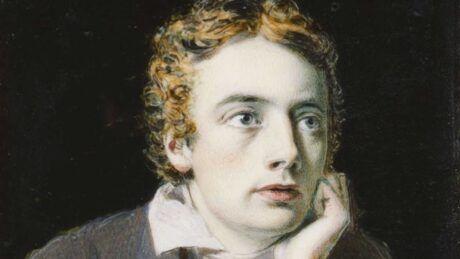The Synthesis of Learning

Chatterton 1856 Henry Wallis 1830-1916
Bequeathed by Charles Gent Clement 1899 http://www.tate.org.uk/art/work/N01685
Typical image of the tormented Romantic artist, a cliché of the early 18th Century and later. Such art often represents the lifestyle of men and women whose lives were deeply involved with the Humanities; hence, they read Greek and Latin and took their models from classical antiquity. At the same time they had to struggle with the impact of the Industrial Revolution leading to Modernity and the orchestrated decadence of the 20th Century. Their struggles — in particular, the effort to redefine and revision humanity — were largely left incomplete and unresolved. The Romantics faced issues they could not resolve. Today in the Humanities on Nemeta we resume the challenges they faced.
The Synthesis of Learning:
Stanzas from Adonais by Shelley
LII
The One remains, the many change and pass;
Heaven’s light forever shines, Earth’s shadows fly;
Life, like a dome of many-colour’d glass,
Stains the white radiance of Eternity,
Until Death tramples it to fragments.—Die,
If thou wouldst be with that which thou dost seek!
Follow where all is fled!—Rome’s azure sky,
Flowers, ruins, statues, music, words, are weak
The glory they transfuse with fitting truth to speak.LIII
Why linger, why turn back, why shrink, my Heart?
Thy hopes are gone before: from all things here
They have departed; thou shouldst now depart!
A light is pass’d from the revolving year,
And man, and woman; and what still is dear
Attracts to crush, repels to make thee wither.
The soft sky smiles, the low wind whispers near:
‘Tis Adonais calls! oh, hasten thither,
No more let Life divide what Death can join together.
Third stanza quoted:
LIV
That Light whose smile kindles the Universe,
That Beauty in which all things work and move,
That Benediction which the eclipsing Curse
Of birth can quench not, that sustaining Love
Which through the web of being blindly wove
By man and beast and earth and air and sea,
Burns bright or dim, as each are mirrors of
The fire for which all thirst; now beams on me,
Consuming the last clouds of cold mortality.

John Keats (1795 – 1821) Icon of the Romantic dreamer, British-style
Background – typical of what you would be required to know in routine study of the humanities in the past:
Adonais: An Elegy on the Death of John Keats, is a pastoral elegy written by Percy Bysshe Shelley for John Keats in 1821, and widely regarded as one of Shelley’s best and best-known works. The poem, which is in 495 lines in 55 Spenserian stanzas, was composed in the spring of 1821 immediately after 11 April, when Shelley heard of Keats’ death (seven weeks earlier). It is a pastoral elegy, in the English tradition of John Milton’s Lycidas. Shelley had studied and translated classical elegies. The title of the poem is modeled on ancient works, such as Achilleis (a poem about Achilles), an epic poem by the 1st-century AD Roman poet Statius, and refers to the untimely death of the Greek Adonis, a god of fertility. Some critics suggest that Shelley used Virgil’s tenth Eclogue, in praise of Cornelius Gallus, as a model.
Note how studies in literature in the classical method relied on reference to models. Shelley models the style and structure on pre-existing works. In a similar way, Humanities at Nemeta introduces you to models of moral, intellectual, and artistic accomplishment from which you may draw to enhance and deepen your personal experience. Consider this method of learning compared to who and what are presented as models in the mass media today.
In development….